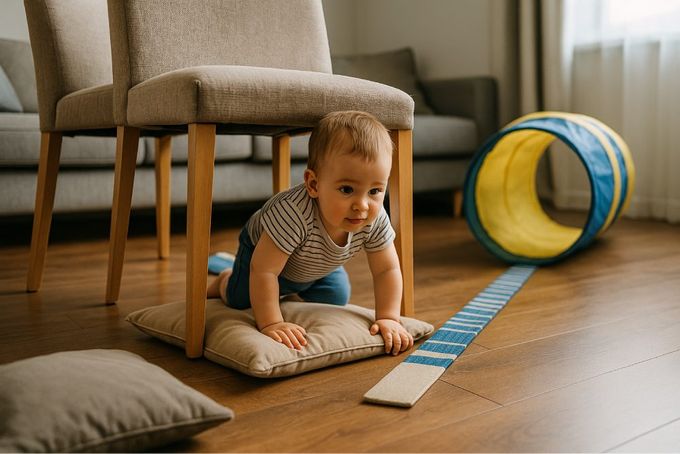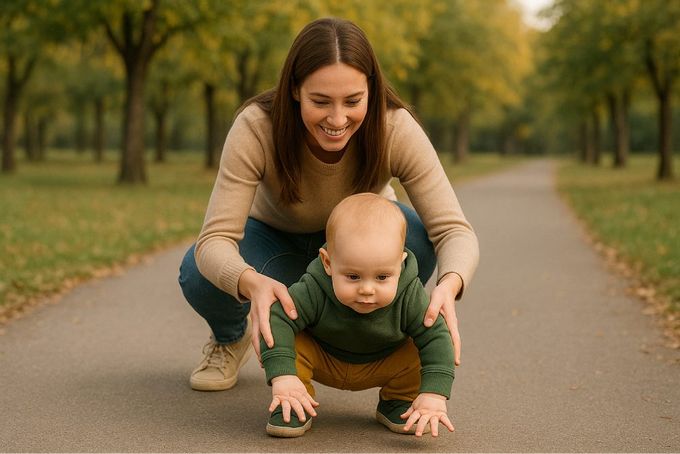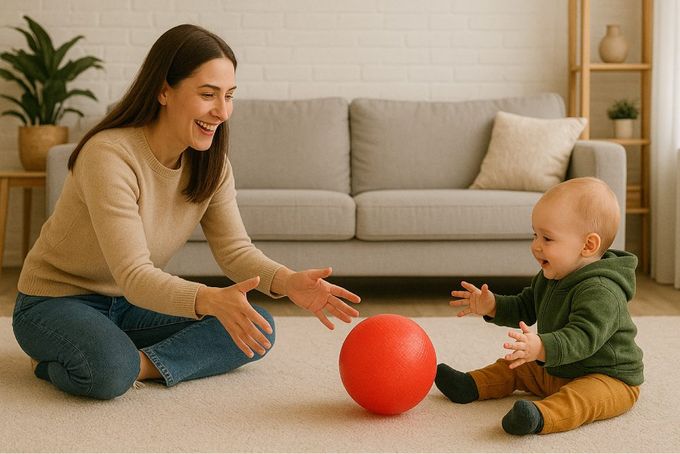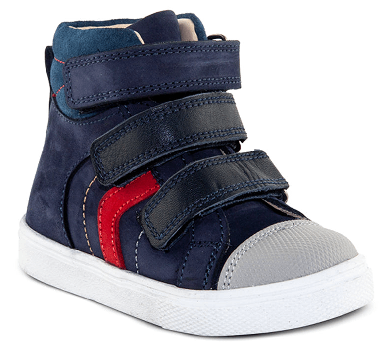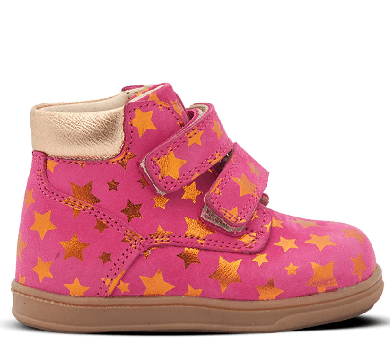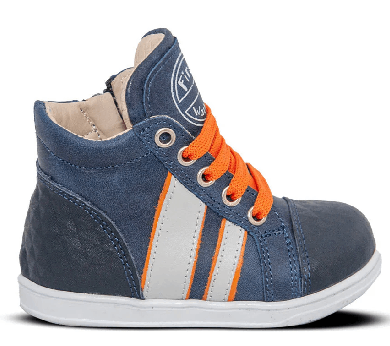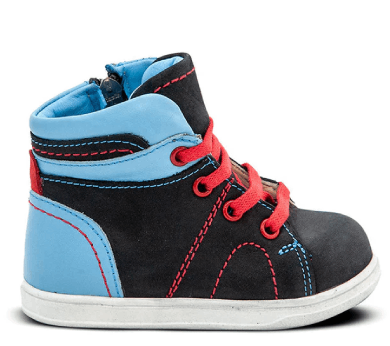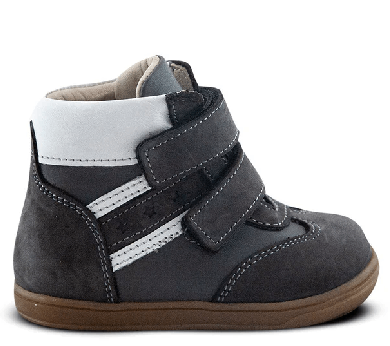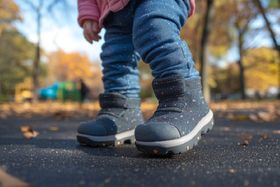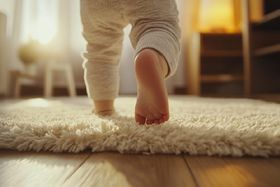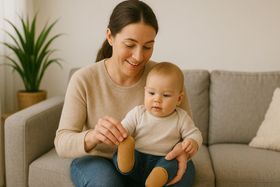Preschool Gross Motor Development: Milestones and Activities
Your preschooler's movement skills grow fast between ages 3-5, from confident walking to hopping and catching. Most kids develop naturally, but some delays need attention. This guide shows what's normal at each age and simple activities that actually help.
Updated November 25, 2025
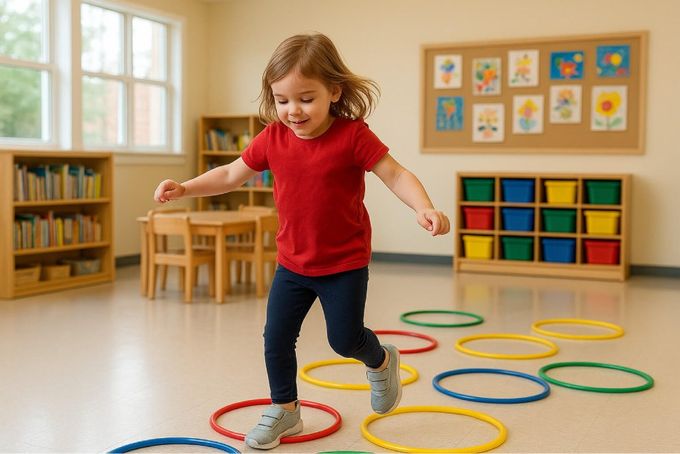
You watch your preschooler run across the playground and notice they're still a bit wobbly. Or maybe they struggle to hop on one foot while their friends do it easily. You start wondering if their development is on track.
As your preschooler embarks on the journey of mastering their body movements through preschool gross motor development, it's essential to support their growth in every step. From walking and running to climbing and jumping, gross motor skills are fundamental to their physical development and future abilities.
Whether you're navigating the milestones of coordination, balance, or strength, understanding what to expect at each age helps you support your child's growth. This guide shows you the key milestones, red flags to watch for, and practical activities that make a real difference.
Why Gross Motor Skills Matter Beyond Movement
Your child's gross motor skills do more than help them play. When your child learns to plan movements—like navigating an obstacle course—they're building problem-solving skills. Those same planning abilities help them focus, follow directions, and manage tasks at school.
Plus, coordinated movement lets your child join in games with friends. And here's something important: gross motor skills develop first. They create the stability your child needs for fine motor skills, like writing later.
Key Milestones in Gross Motor Development for Preschoolers
Between ages 3 and 5, your preschooler goes through important gross motor milestones. These show how well your child can move and coordinate their body. Here's what to expect:
Gross Motor Skills 3-Year-Old Children Develop
At age 3, preschoolers develop a mature walking pattern [1]. This means reciprocal arm swings and heel strikes—they walk like an adult now. They can also walk backward in a straight line.
Your 3-year-old should be able to stand on one foot for 3 seconds, jump forward about 2 feet, and kick a ball forward about 6 feet.
Key Milestone: A mature, adult-like gait.
Gross Motor Skills 4-Year-Old Children Master
By age 4, gross motor skills advance significantly. Your child can climb stairs using alternating feet going up, though they still need help going down [2]. They'll also start hopping on one foot and throwing a ball with one hand.
Your 4-year-old should stand on one foot for 5 seconds, do 5 consecutive hops, and jump forward about 3 feet.
Key Milestone: Alternating steps while climbing and hopping.
Gross Motor Skills 5-Year-Old Children Achieve
At 5, your child's gross motor skills reach new levels. They hop on one foot with real control. They can catch a larger ball with their body (chest or tummy) instead of just their arms. Most can ride a tricycle independently [2].
Your 5-year-old should stand on one foot for 10 seconds, skip with alternating feet, and balance on a balance beam.
Key Milestone: Catching up with the body and independent tricycle riding.
Understanding Normal Differences in Development
Every child develops differently. Some hit milestones early; others take longer. A child might skip crawling entirely and go straight to walking.
Here's a helpful rule: a delay of up to 1.5 times the expected age is still normal. So if most kids hop by age 4, your child hopping well by age 6 might still be typical.
Red Flags: When to Call Your Pediatrician
Most preschoolers develop just fine. But watch for these warning signs:
At Age 3: Your child can't walk up stairs with help, walks on tiptoes most of the time, or falls a lot during regular walking
At Age 4: Your child can't jump in place at all, can't kick a ball forward, or can't hop on one foot even once
At Age 5: Your child can't hop 2-3 times on one foot, can't catch a large ball with their body, or can't skip at all
Any Age: Your child has foot or leg pain during play, gets tired super quickly while walking, has ankle or knee pain after running, limps regularly, or refuses to put weight on their feet
Expert Note: If your child shows 3 or more of these signs past the age listed, check with your pediatrician or a pediatric physical therapist.
What Affects Preschool Motor Skills Development
Three things shape how your child develops motor skills:
- Genetics: Your child's genes affect muscle tone, reflexes, and coordination. If you had motor delays as a kid, your child might too. Conditions like Down Syndrome or Developmental Coordination Disorder can cause delays [3]
- Environment: Your child needs space to move. Parks, playgrounds, and safe areas for running all help. Kids ages 3-5 need at least 180 minutes of activity daily [4]
- Lifestyle: Good nutrition supports muscle growth. Not enough iron or vitamin D can make your child tired and slow development [5]. Too much screen time steals movement opportunities [4]
Best Gross Motor Activities for Preschoolers
These activities boost your child's balance, coordination, and strength. Adjust them based on your child's age:
1. Obstacle Courses: Building Progressive Challenges
Obstacle courses work for any age. For 3-year-olds, set up crawling under the table, walking along taped lines on the floor, and stepping over stuffed animals.
For 4-year-olds, add a board on the floor as a balance beam, a tunnel to crawl through, and a target for throwing bean bags.
For 5-year-olds, add timers, hopping patterns between hula hoops, or backward walking sections.
How to Modify: Start simple with 3-4 tasks. Add one new challenge at a time. Once your child masters it, add time limits or more repetitions.
2. Animal Walks: Building Body Awareness
Kids love pretending to be animals. Try frog hops (squat and jump), crab walks (sit with hands and feet down, lift hips), or bear walks (hands and feet down, walk with straight legs).
These silly movements strengthen different muscles and improve coordination.
3. Ball Games: Enhancing Hand-Eye Coordination
Ball games teach coordination, timing, and spatial awareness. Start by rolling a large, soft ball back and forth on the floor.
Move to gentle tosses, then catch with both arms. Eventually, try one-handed throws, kicking, and bouncing.
How to Modify: Use big, soft balls first (beach balls work great). As coordination improves, try smaller, bouncier balls.
Adapting Activities for Children with Developmental Delays
Some preschoolers need modifications to activities. The goal is to keep them engaged without frustration.
- Pacing: For children with lower energy levels, incorporate breaks into activities. Allow them to complete tasks at their own pace to avoid tiring them out.
- Environment: Modify the environment by adding supportive equipment, such as harnesses or grab bars, to assist with standing and walking.
- Activity Changes: If a child isn’t yet able to jump, ask them to step over obstacles instead. This still provides a challenge, but allows them to succeed at their level.
Bad weather or small spaces don't have to stop movement. Get creative.
For Indoor Days: Use painter's tape on the floor as "balance beams." Clear furniture from one room for open play. Hallways make great bowling alleys with plastic bottles and balls
For Small Apartments: Furniture becomes an obstacle course. Crawl under tables, step over cushions, and balance along the couch edge (with your help). Even 10-15 minutes daily makes a difference
For Hot Days: Sprinkler games combine running, jumping, and cooling off. Walking on a beach or in a sandbox challenges muscles differently from solid ground
The Importance of Footwear in Gross Motor Development
Shoes matter more than you might think for your preschooler's movement development.
Bad shoes cause problems. Tight shoes squeeze toes and affect balance. Stiff soles prevent foot muscles from strengthening properly. Loose shoes slip at the heel, making your child unstable. Heavy shoes tire little legs quickly.
What to Look for in Preschooler Shoes
Flexible soles that bend at the ball of the foot
Wide toe boxes that let toes spread naturally
Non-slip, textured rubber bottoms
Secure heels that don't slip
Shoes made of breathable materials like leather or mesh
When it comes to supporting your preschooler's gross motor development, First Walkers offers orthopedic shoes designed for active preschoolers. Our shoes combine flexibility, support, and proper fit that growing feet need.
Helping Your Preschooler Thrive
Supporting your child's preschool gross motor development shapes their physical abilities, thinking skills, and friendships. By understanding normal milestones, catching red flags early, and providing fun activities, you help your child reach their potential.
Remember, every child develops at their own pace. The timelines here are typical, but variation is normal.
Focus on giving your child chances to move, creating safe spaces to play, and making sure they have proper shoes. With your support, your preschooler will grow stronger and more coordinated every day.
References:
- “Variations in normal gait development,” Paediatrics and Child Health, Available: https://www.sciencedirect.com/science/article/abs/pii/S1751722214000535
- C. F. Dosman, D. Andrews, and K. J. Goulden, “Evidence-based milestone ages as a framework for developmental surveillance,” Paediatrics & Child Health, vol. 17, no. 10, pp. 561–568, Dec. 2012, doi: 10.1093/pch/17.10.561. Available: https://pmc.ncbi.nlm.nih.gov/articles/PMC3549694
- G. Castellucci and R. Singla, “Developmental Coordination Disorder (Dyspraxia),” StatPearls - NCBI Bookshelf, Feb. 24, 2024. Available: https://www.ncbi.nlm.nih.gov/books/NBK603724/?
- World Health Organization: WHO, “To grow up healthy, children need to sit less and play more,” To Grow up Healthy, Children Need to Sit Less and Play More, Apr. 24, 2019. Available: https://www.who.int/news-room/detail/24-04-2019-to-grow-up-healthy-children-need-to-sit-less-and-play-more
- E. Pala, M. Erguven, S. Guven, M. Erdogan, and T. Balta, “Psychomotor Development in Children with Iron Deficiency and Iron-Deficiency Anemia,” Food and Nutrition Bulletin, vol. 31, no. 3, pp. 431–435, Sep. 2010, doi: 10.1177/156482651003100305. Available: https://pubmed.ncbi.nlm.nih.gov/20973463/?
Disclaimer: First Walkers' information is intended for educational and informational purposes related to toddler footwear and feet. We encourage you to consider individual circumstances and consult qualified orthopedists about specific conditions.
FAQs
What age should a child be able to hop on one foot?
Most children hop on one foot with ease by age 5, though attempts begin around ages 3-4. Your 3-year-old might manage one hop before losing balance, while your 4-year-old can usually do 2-3 consecutive hops. By age 5, expect 8-10 hops on one foot with good control.
How can I improve my preschooler's gross motor skills?
Improve your preschooler's gross motor skills with these seven strategies: (1) Provide 180 minutes of daily physical activity, (2) Create obstacle courses with progressive difficulty, (3) Practice ball games that challenge coordination, (4) Visit playgrounds regularly for climbing and swinging, (5) Limit screen time to maximize movement opportunities, (6) Try animal walks and dance games for fun variation, (7) Ensure proper footwear that supports natural movement.
When should I worry about gross motor delays in preschoolers?
Worry about gross motor delays if your child shows 3 or more red flags for their age plus 6 months. Specific concerns include: cannot walk stairs with support by age 3, cannot jump in place by age 4, cannot hop on one foot by age 5, experiences frequent pain during activity, gets extremely tired during short walks, limps regularly without injury, or regresses in previously mastered skills. Consult your pediatrician or pediatric physical therapist if you notice these patterns.
How much physical activity does my preschooler need daily?
Your preschooler needs at least 180 minutes (3 hours) of physical activity daily according to World Health Organization guidelines. This should include 60 minutes of moderate-to-vigorous intensity activity like running, jumping, and active play. The remaining time can include lighter activities like walking, gentle games, and structured movement activities. Spread this throughout the day rather than doing it all at once.
What's the difference between gross motor and fine motor skills?
Gross motor skills involve large muscle movements like walking, running, jumping, and climbing—activities that move the whole body or large body parts. Fine motor skills involve small, precise movements like writing, buttoning, cutting with scissors, and picking up small objects. Gross motor skills develop first and create the stability and core strength your child needs for fine motor control later. Strong gross motor development supports better handwriting, drawing, and self-care skills.

